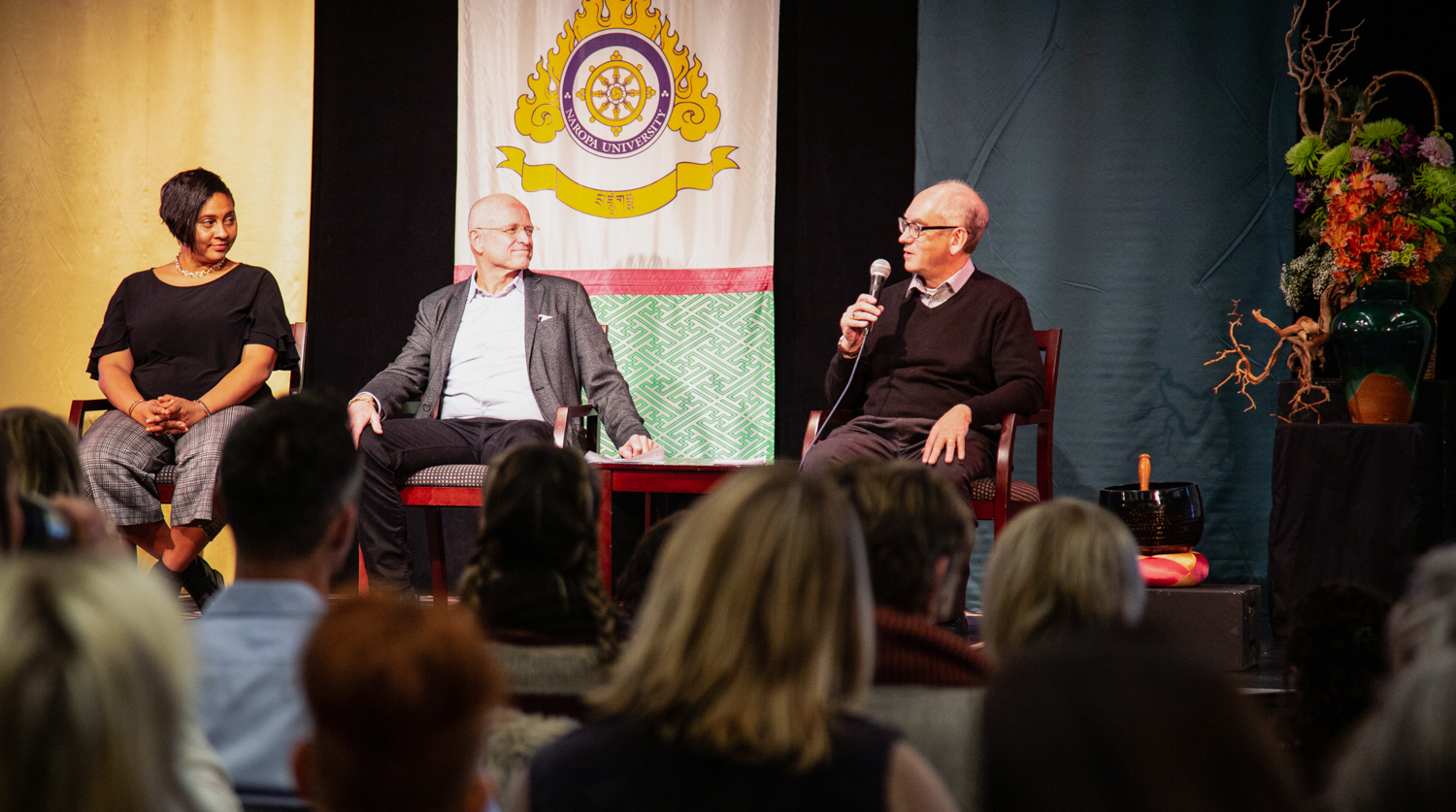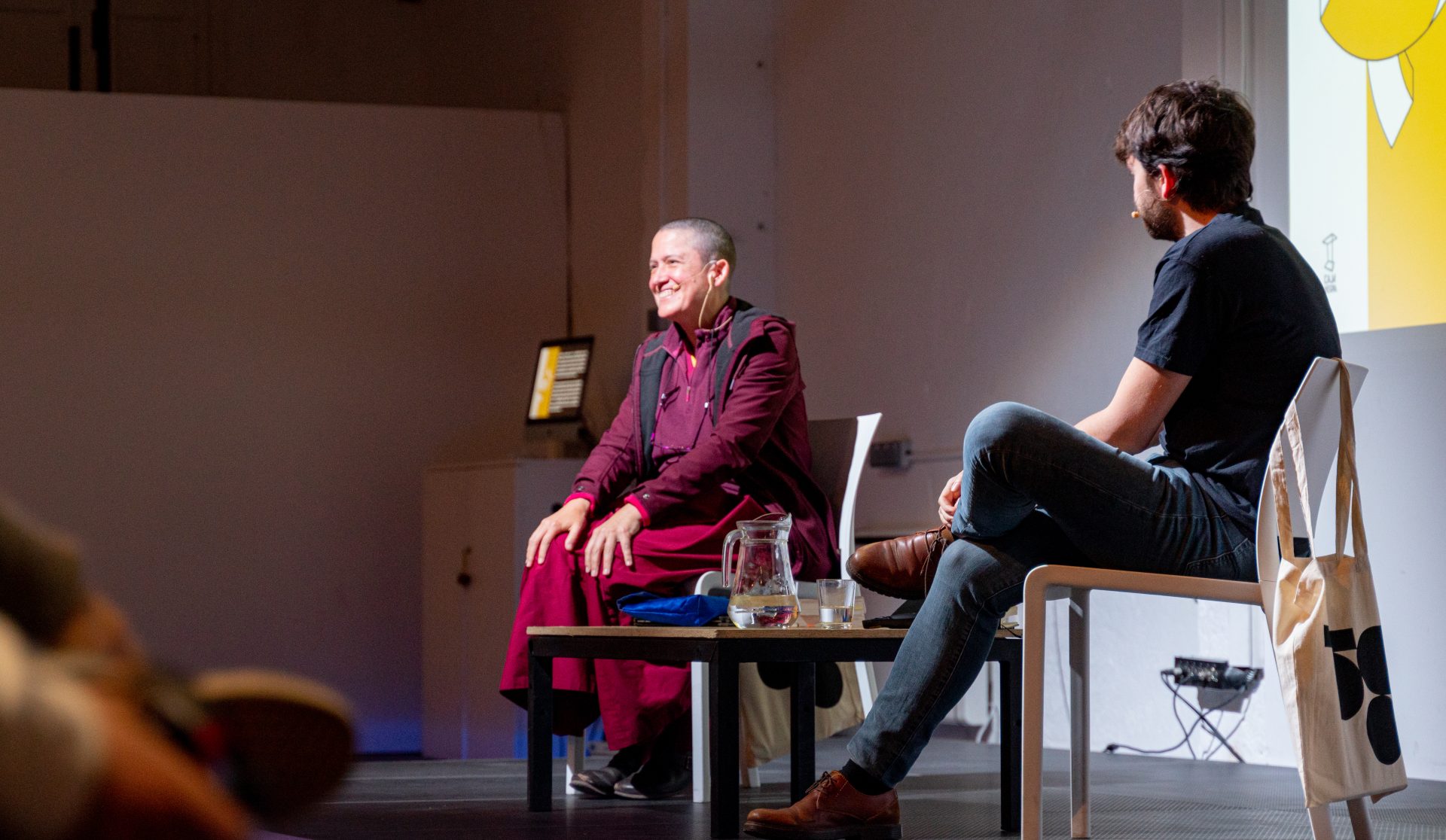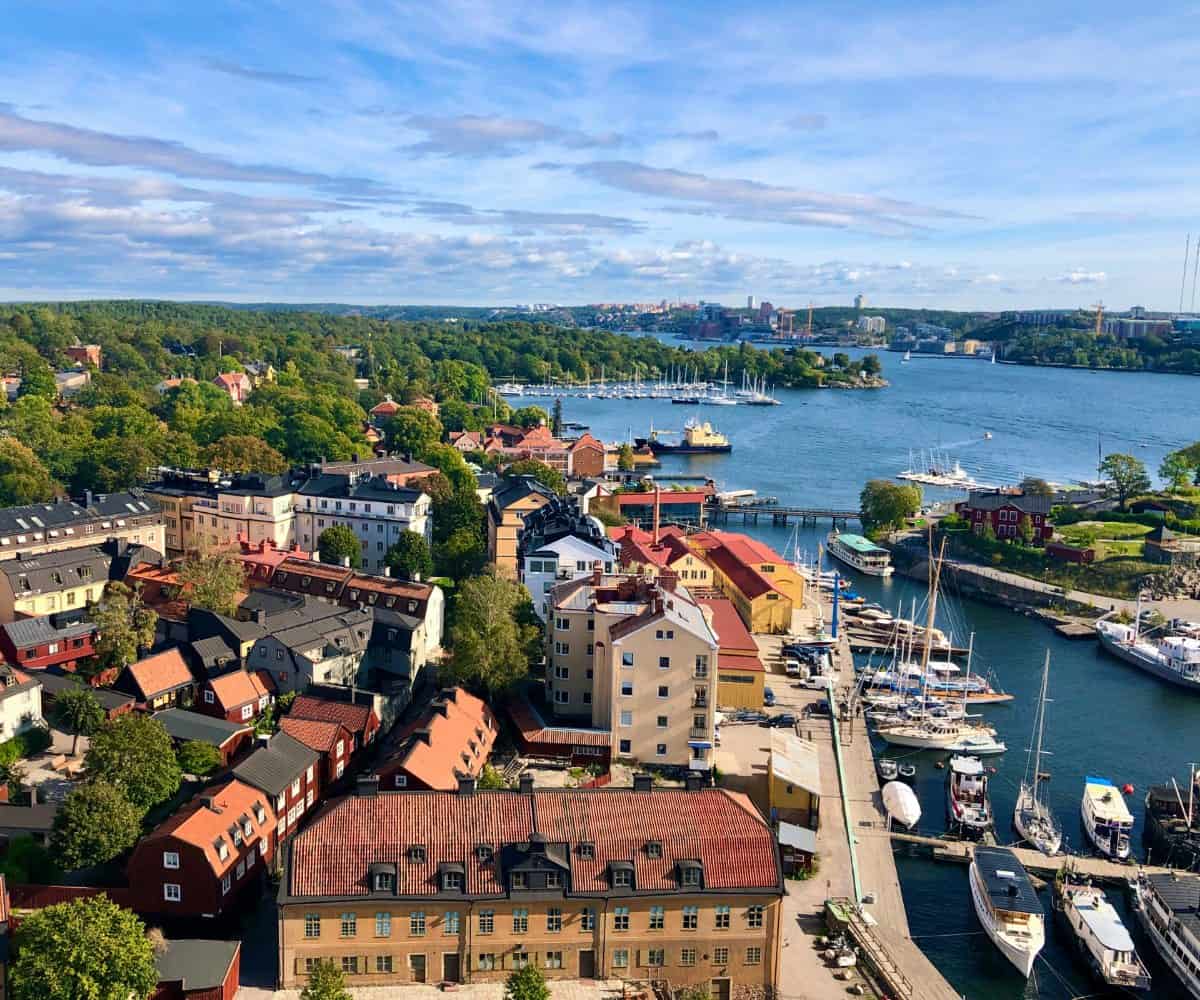Relaxing into Freedom
How we can learn to let go of our sense that there’s something wrong with us The post Relaxing into Freedom appeared first on Tricycle: The Buddhist Review.

According to psychotherapist Bruce Tift, Buddhism and psychotherapy both seek to provide freedom from unnecessary suffering, yet they approach this goal in ways that are fundamentally irreconcilable.
For Tift, the distinction lies in how each approach understands what it means to be free. In his book, Already Free: Buddhism Meets Psychotherapy on the Path to Liberation, he lays out the key differences between Buddhism and Western psychotherapy—and what we can learn from holding these contradictory energies simultaneously.
In a recent episode of Tricycle Talks, Tricycle’s editor-in-chief, James Shaheen, sat down with Tift to discuss why our survival strategies are often out of date, how we can practice returning to open awareness, and what it means to know that we’re already free. Read an excerpt from their conversation below, and then listen to the full episode.
What first captured me about your book is this notion of not feeling fully alive or embodied in one’s life, and you write about being free. What do you mean by free? In Western culture, we tend to talk about conditional freedom, which is roughly the notion that I can do whatever I want to do. But we’re never going to be able to do everything, so there’s a potential for a type of never-satisfied quality—like a hungry ghost. We can never experience everything that tastes good or looks good or is fun to do, and we’re always going to deal with the fact that we are basically a collection of limitations. We have our bodies, our senses, and our own conditioned histories, so it’s a fantasy that we can do whatever we want to do.
A Buddhist view of freedom is almost the opposite, which is that our sense of freedom might arise more from being in alignment with reality than from being a self that can do anything regardless of reality. To be simplistic, unconditional freedom could be understood as conscious participation in open awareness. Open awareness has been described as basic intelligence, an always-present alertness where there’s no bias or agenda. A conscious experience of freedom could be understood as having more and more frequent moments of conscious participation in that openness that has no agenda. That type of open awareness cannot be grasped with thoughts or sensations, and it actually turns out to be rather disturbing to investigate because it provides absolutely no support for personal identity.
You work as a therapist, and you say that the basic assumptions of therapy and the view of Buddhist practice are impossible to fully integrate into one path. Why is this? At the heart of it is that a Buddhist view, as I understand it, asserts that upon investigation, we’re never going to find a self that’s independently existing, objectively real, and continuous over time. Psychotherapy as an expression of Western culture has been organized around an assumption that reality is made up of objectively existing objects, forces, and experiences. If we believe that there is an actually existent self, then it makes sense to try to protect and improve that self. But if we investigate the view that the appearance of a self is not evidence of an objectively existing self, then the work we do to improve the quality of our experiencing has more to do with trying to bring ourselves into alignment with what is most accurate rather than trying to improve and protect this self.
You describe the approaches of therapy and the Buddhist path as the developmental view and the fruitional view. So, first, what is the developmental view? The developmental view is a very pervasive view in Western therapy. In this view, what causes unnecessary suffering as an adult is the continuation and perpetuation of ways in which we tried to take care of ourselves when we were young. When we were powerless, dependent little beings, we had to bring ourselves into alignment with what our parents or siblings or schools told us we needed to experience or be like. From that point of view, we could say that our young survival strategies were healthy adaptations to a mixture of healthy and dysfunctional dynamics—a healthy response to a dysfunctional emotional environment requires a dysfunctional strategy. When we’re adults, our motivation is still healthy, but we’re trying to take care of ourselves now in ways that we learned when we were much younger.
A developmental view basically suggests that the main cause of unnecessary suffering is these out-of-date efforts to take the best care of ourselves possible. Because they are out of date, these strategies don’t work very well. And so Western therapy in general could be viewed as a variety of techniques to bring us more into alignment with our current adult experience and to challenge our identification with our conditioned histories. We’re not going to get rid of our conditioned histories, but we can challenge our identification. There’s a general intention of bringing ourselves into a realistic experience of being an adult.
And what about the fruitional view? The term “fruitional” comes from the Vajrayana organizing principle of ground, path, and fruition. In more relative ways, ground is where we find ourselves to be, fruition is where we want to be, and path is how we get from here to there. But from a Vajrayana view, the ground is seen as basically identical with fruition, the only difference being that at the ground level of experience, we’re taking our own dramas and our sense of being a separate self very seriously. Because we take it seriously, we think we have to solve it. A different view and perhaps a more Vajrayana view is that what is most helpful is not improving the quality of our immediate circumstances but shifting our perspective so that we find that full, intimate engagement with immediate experience is workable.
If we keep investigating, we find no evidence of this solid self that we have to protect or defend. We don’t find any evidence that any of our emotions are permanent. We find that we’re not in control of our life. We discover a lot of things that are disturbing from an egoic point of view, but if we are able to stay more and more present without interpretation, we may discover that there’s no evidence of a problem. Yes, our stomach’s tight; yes, our heart’s beating fast when we’re thinking about a bill we didn’t pay or what our partner said to us. But if we stay very present and embodied, we may never find any evidence of a problem. In very simplistic terms, a fruitional point of view is a practice of engaging with our experience informed not just by the theory but by actual, personal evidence that there’s no reason to relate to ourselves or to life as if there’s a problem.
You say that the relationship between the developmental and fruitional view is similar to the relationship between gradual and sudden awakening, or between being and becoming. Can you say more about that? The developmental view has to do with acknowledging that there are patterns of experience that continue to arise, and there’s a good chance that a lot of them will continue to arise, maybe until we die. It’s not likely that we’re going to get rid of our conditioned history, but it is possible to moderate those patterns. That usually takes some time. Someone might go to therapy, and if they find therapy helpful, then often they will be able to look back not day by day but six months or a year and notice that they’re feeling more at ease and less self-aggressive. We could say that’s like a gradual approach of working on improving the form of our patterns of experience.
“If we can find a way to hold more contradictory experiences, I think we’ll find it’s a better approximation of the complexity of reality.”
A sudden approach, from a Vajrayana view, is that our absolute or our most intimate type of experiencing is open awareness. And that’s always present. You can’t have experience without awareness. How can you experience anything without awareness that you’re experiencing? From that point of view, we don’t have to improve anything to practice investigating the nature of awareness. We can practice basic awareness practices right now: if we’re experiencing feeling tight, we can ask, “Well, what is it that’s aware of feeling tight? And then what is the nature of this awareness?” These awareness practices are not about improving the quality of anything. They’re about bringing conscious awareness to whatever is arising. That experience of participation in open awareness only happens in the present moment. That’s the only location of any of our experiencing. And so it’s not something in the future. We’re just practicing in the present, which is more analogous to sudden awakening.
How do we hold the contradictory energies of these two views simultaneously? Well, practice. [laughs] We all come out of childhood with some degree of black-and-white, all-or-nothing organization. If we have a curiosity about more of a nondual view where we’re not taking sides but moving in the direction of holding apparently contradictory experiences simultaneously without any fantasy of resolution, then we can practice that. Usually we’re going to practice on a more relative level to start with, and then we move in the direction of holding what we call absolute and relative as not the same but not separate—not one, not two.
I think on a relative level, it’s helpful to train ourselves to assume that we’re going to have profoundly contradictory feelings about anything that’s important in our life and start to learn that we don’t have to resolve that. In fact, we may discover that training ourselves to hold contradictory thoughts, feelings, and experiences is a better approximation of complex reality because reality is not divided into yes and no, up and down. That’s our minds—our minds work dualistically; it’s not that reality is dualistic. If we can find a way to hold more contradictory experiences, I think we’ll find it’s a better approximation of the complexity of reality.
In this way, we can think of our practices more as recovery practices rather than achievement practices. We can assume that we will be confused, messy humans until we die, just as a working assumption. And then our practice is to recover and to come back to immediacy, to openness, to kindness, to noninterpretive presence, to vulnerability. We ask, “What is it that I’m trying to not feel right now?,” and then we go directly into it so we can go through it. If we try to go around something and avoid it, we actually strengthen its apparent significance.
“The practice is not to become enlightened in the future. The practice is full, vulnerable, intimate, open participation in our immediate experiencing, which is all we ever have anyway.”
From a Vajrayana point of view, we recover by returning immediately into open awareness. We’re probably going to be gone in a couple of seconds. But the more frequently we come back into openness as a recovery practice, we could imagine that we’re all walking around immersed in these thick filters of interpretations and fears and dramas and conditioned histories, and returning to openness could be understood as poking a little hole in that thick filter. Even one little hole can suggest there’s something else there. The more frequently we have these moments, we keep poking little holes in this apparent solidity, and at some point we actually see through that drama without having to get rid of it. It becomes nonsolid in its nature. At that point, the practice is not to resolve our neuroses. The practice is not to become enlightened in the future. The practice is full, vulnerable, intimate, open participation in our immediate experiencing, which is all we ever have anyway.
To close, what does it mean to know that we are already free? On an intellectual level, this is an assertion that ground and fruition are synonymous. Experientially, when we commit to staying present and embodied and unconditionally kind with everything that’s arising, we tend to start going through a number of increasingly vulnerable, open types of experience. At first, we might start to have little flashes like, “Oh, that was really special.” But at some point we might start to have a frequency of conscious participation in an experience of unconditional freedom, unconditional openness. There’s nothing to say, nothing to do—we can relax here in this panic. It’s not going to happen spontaneously for most of us, but with practice, we find that this sense of open awareness is always present, and it’s more about training ourselves to pay attention and to relax into it. [Over time,] we find more and more experiential evidence that what is always true is this open, free awareness, and there’s nothing we need to do to discover it, manufacture it, or earn it with good merit.
This excerpt has been edited for length and clarity.

 Aliver
Aliver 































